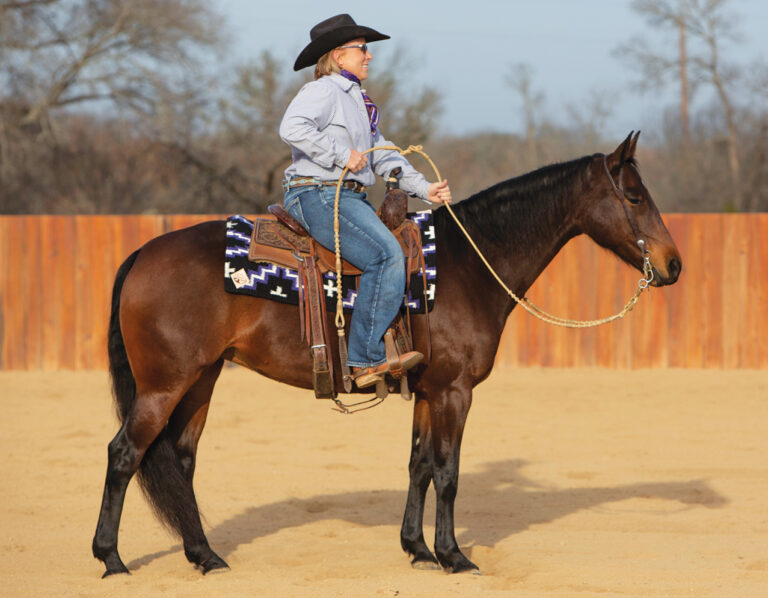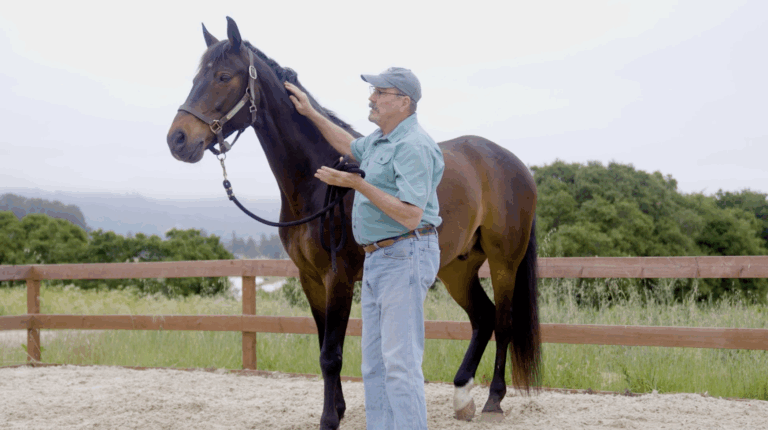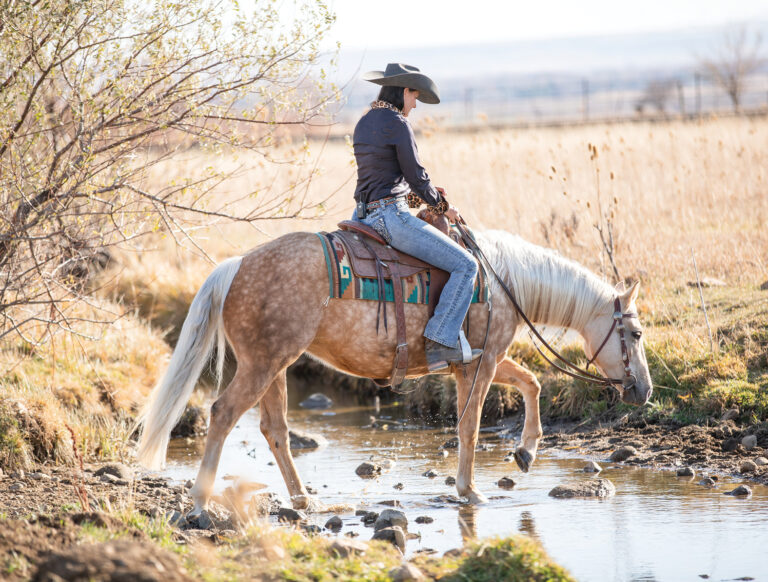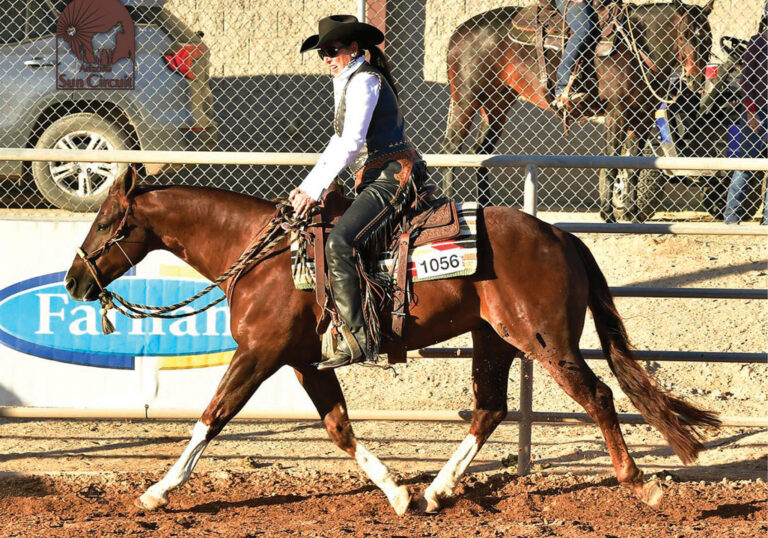“Clinton, I want to improve my gelding’s behavior, but he gets so grumpy when I ask him to do something. I reward him when he is cooperative, but it doesn’t seem to be making him any better. And I’m afraid ‘getting after him’ will just make his attitude worse–or even make him dislike me.”
Talk about a bad attitude–this horse owner has one! I see this a lot at my clinics. People get so worried about their relationships with their horses and so wrapped up in the whole natural horsemanship thing they forget the bottom line: You’ve got to get the job done.
[LEARN MORE: Get the rest of Clinton Anderson’s Training Methods.]
Clinton Anderson: Lessons Well Learned: Why My Method Words for Any Horse
Training on the Trail: Practical Solutions for Trail Riding
Clinton Anderson Downunder Horsemanship: Gaining Respect and Control on the Ground, Series 1
Clinton Anderson Colt Starting Training Kit
(As an Amazon Associate, we earn from qualifying purchases made through affiliate links.)
I learned this when I was about 15 or 16 while training horses in Australia for Gordon McKinlay. I was just getting started with natural horsemanship, and was working with a big black mare with a bad attitude. In keeping with my early training, as soon as that mare would do something right, I’d instantly reward her with a pat, a treat, and a little break.
I was basically trying to bribe her into loving me and loving what she was doing. Problem is, she was actually getting worse by the day.
Gordon took one look at this belligerent mare after I’d been working with her for a while and said, “Clinton, you’ve done a pretty bad job on this horse.” Gordon has never been one to mince words.
I said, “Gordon, I’ve been working with her seven days a week, doing everything you taught me, trying my best to get her where she needs to be, but she’s just got a bad attitude.”
“Well,” he replied, “you’d better step up to the plate and get the job done because this mare has to go home next week, and the owners aren’t going to be happy when they see how bad she is after being here for six weeks.”
Ask, then tell
So here’s what I did: For the entire last week of her training, I treated that mare the way I would any other horse. I got in there every day and made the wrong thing difficult for her and the right thing easy. I made her feet move–now. I asked her, and when she didn’t respond, I told her. I didn’t worry about her feelings or her emotions or her attitude.
When she did something right, I rewarded her by simply letting her rest and leaving her alone. When she did something wrong, I made her feel very uncomfortable.
Within three days, that mare’s attitude–and her whole perception of work, and of me–completely changed. In fact, in that last week of working with her, I caught her up to where she should’ve been by that time, despite our initial setbacks. On the day she went home, she was as good as all the other horses that had been ridden for six weeks.
In other words, she made more progress in those last five or six days than she had in the entire five weeks before.
Why didn’t she progress in those first five weeks? Because I’d been babysitting her. I’d been trying to coax her into liking me, and the situation.
What she’d needed instead, and what I finally gave her in that last week, was a taste of, “If you don’t like this, try this. If you thought what I was asking you to do was difficult and sweaty, how about this?
Very quickly, she came to realize that what I’d been originally asking her to do wasn’t so bad after all.
Don’t Beg!
That mare taught me an important aspect of natural horsemanship that a lot of people don’t understand. Although I certainly do want my horses to like me and enjoy the time we spend together (don’t get me wrong–that’s still important to me), the reality is this: When you’re training a horse, you have a job to do, and you’ve got to get that job done. Being businesslike about it will give you your best chance of succeeding at that job. Especially with tough customers!
Horses are a lot like people?their personalities vary. Some horses, like some people, are just naturally cranky. Can you improve their attitude? Sure you can. But you may never get them to put a smile on their face all the time. With some people, you can just look at them sideways and they get angry and hateful. And yet with others, you can insult their mother and they just smile at you and say, “Oh, you don’t really mean that. Come over here and let me give you a hug.” Horses are the same.
Not every person who goes to jail is going to be rehabilitated, and not every belligerent horse is going to completely change his attitude, no matter what you do.
What I’ve discovered, though, is that for the horses with the worst attitudes, the more you baby them, the worse they get. The less you ask them to do and the less pressure you put on them, the worse their attitudes become.
Conversely, the harder you work them and the more you ask them to do, the better their attitudes get. You may never turn a fundamentally sourminded horse into the horse of your dreams. But by always focusing first on getting the job done, you’re always going to get the best possible results with that particular horse.
So–the lesson I learned from that difficult black mare is one I hope you’ll take to heart. Don’t be hooked on this lovey-dovey “I love my horse, he loves me” emotion to the point you’re practically begging your horse to do what you want him to do. Because then, you’ll get the opposite of what you’re looking for.
Before you can have that emotional connection and relationship with your horse, you first have to earn his respect by getting the job done of moving his feet–forward, backward, left, and right.
It’s as simple as that…and nothing to get emotional about.
Adapted from Lessons Well Learned: Why My Method Works for Any Horse, by Clinton Anderson. Available at Horsebooks Etc.
This article originally appeared in the April 2010 issue of Horse&Rider.






